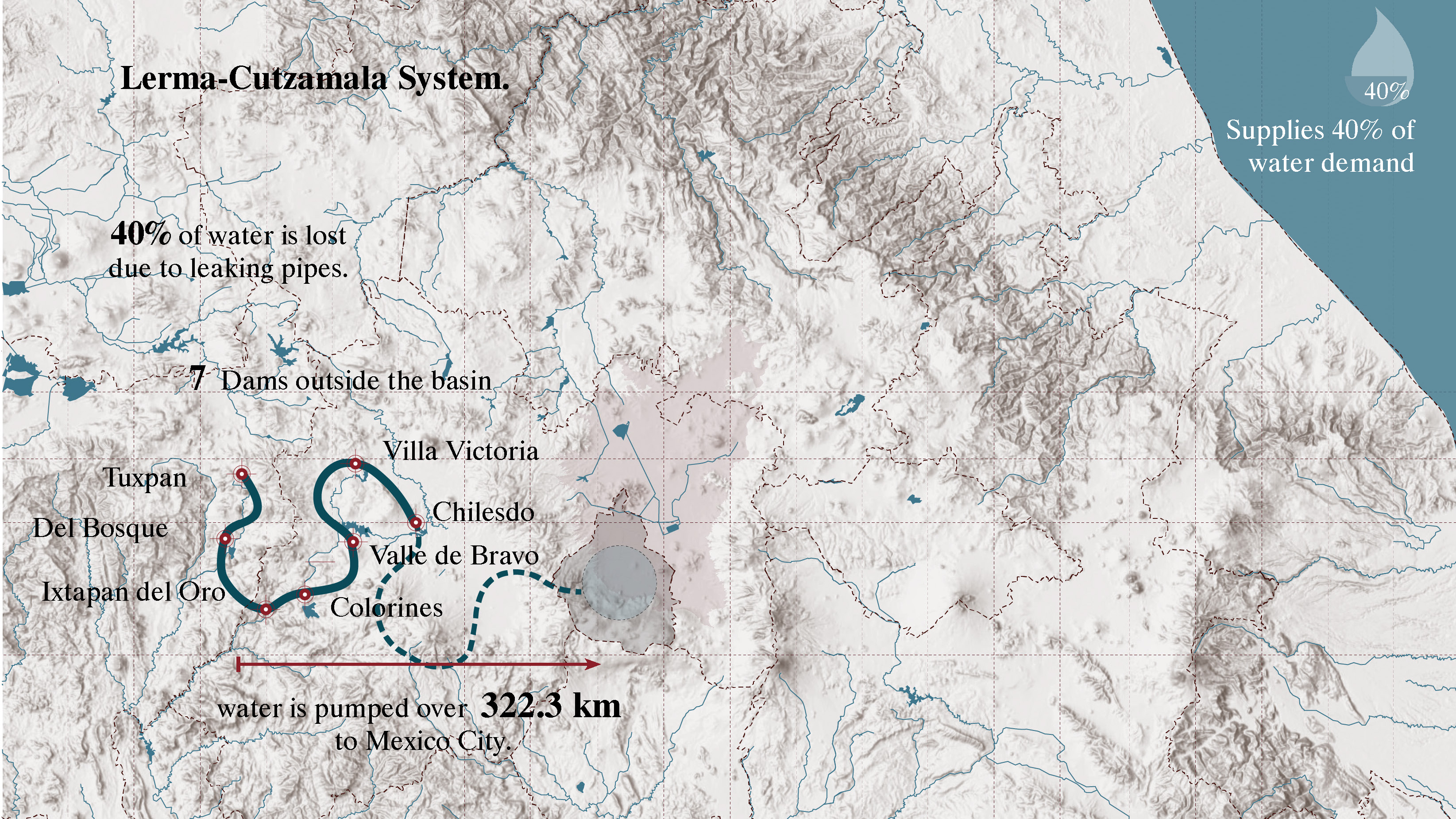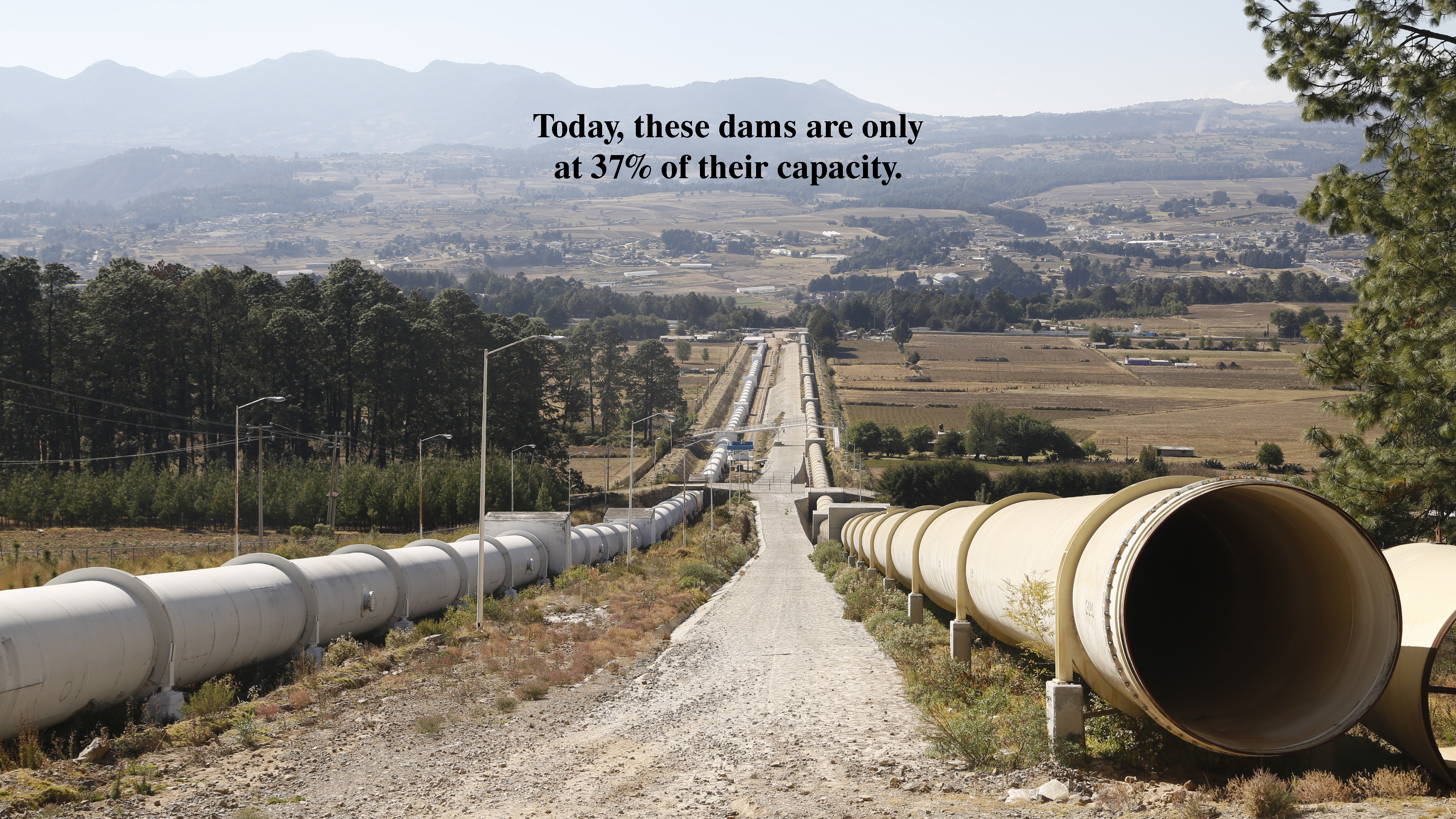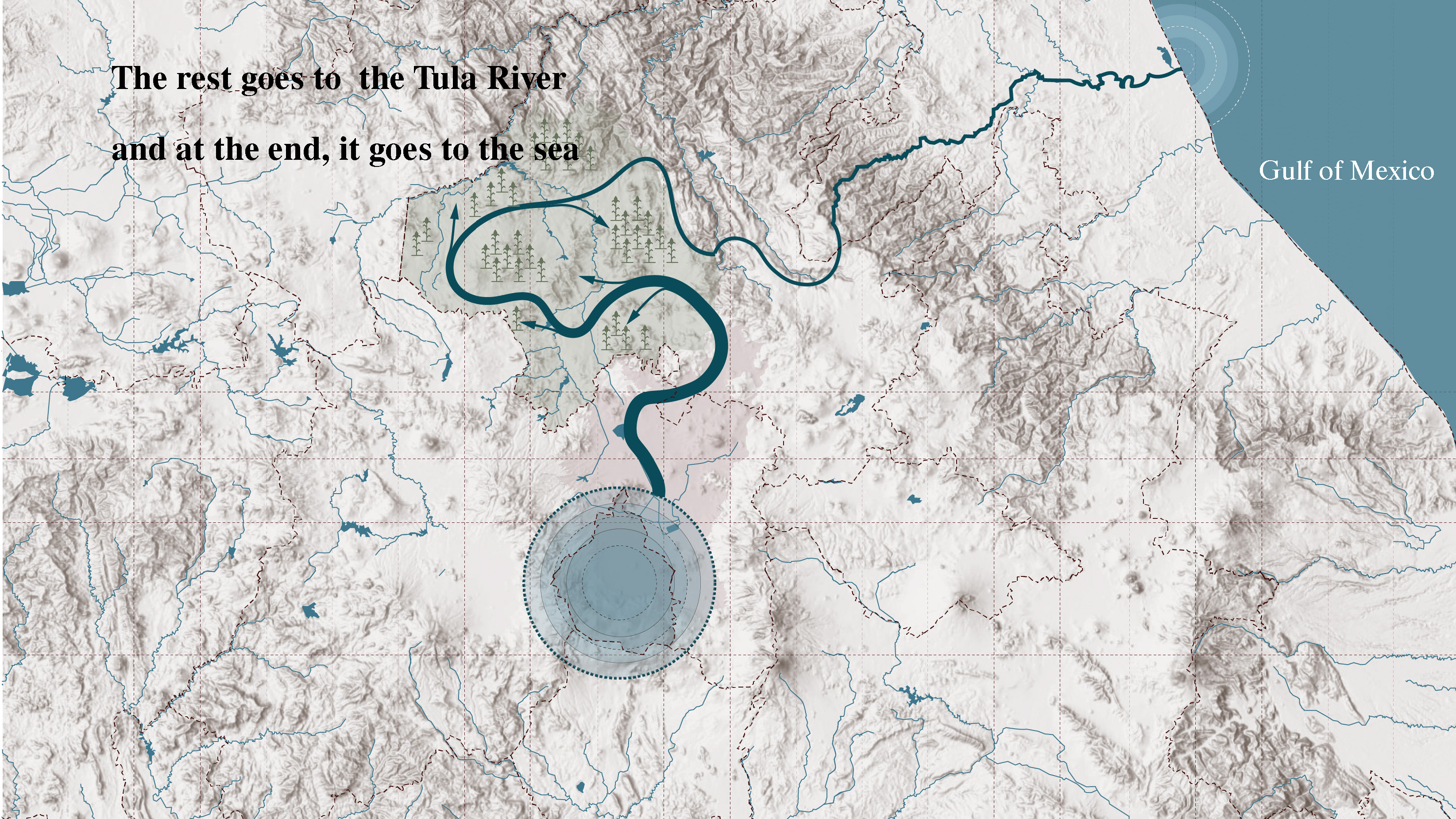How to water a dry basin?
Water System





Source: El Economista
Source: ADN 40




Once the water is extracted, it reaches the tap of the homes/buildings, is used and disposed of, and is sent outside the City to the Water Outlet, the Mezquital Valley for agriculture.


Some foods irrigated with this water are grain corn, green alfalfa, beans, oats, zucchini, green tomato, red tomato, and cilantro.
After being used for agriculture, the remaining water goes to the Panuco River and then to the Gulf of Mexico.


That is the problem: the aquifers are not being recharged by removing all the water from the basin and having impervious pavement on the entire surface.
They are being overexploited.
All rainwater is contaminated with drainage, and the drainage system is at its total capacity and on the edge of collapsing.


Consequences
Sinking
Due to the overexploitation of aquifers, Mexico City sinks up to 40 cm annually.


Flooding
Mexico City is one of the planet's most rainy territories, so flooding is one of the city’s biggest problems.

Geological Faults
There are new geological faults, which can generate earthquakes with an epicentre within the capital and worsen the earthquakes that come from the country’s geological faults.

Thirst







37% of households are victims of crime each year.

